
Making a quilt, however complex, is essentially just a series of very simple running stitches. This paradox lies at the heart of why I love this process. This simple stitch means that patchwork and quilting are skills completely accessible to anyone who can make a stitch with a needle and thread. All the other stuff is really just bells and whistles, and many of my favourite quilts are really simple.
I decided on the name The PlainStitch Workroom back in 2010 when I first started teaching patchwork and quilting classes. I’m often asked about the name so I thought I’d take a moment to explain where it came from, what I hoped to convey with it, and why it’s still so dear to my heart.

I’ve always been a quilt history enthusiast. I fell in love with the stories about quilt making before I fell in love with the process of making a quilt. I knew I wanted to own a quilt because I was so beguiled by the idea that an object that could hold so many emotions and memories in a humble practical item. Inevitably it wasn’t enough to own a quilt, I knew I wanted to make one.

It was beautiful serendipity that I loved making quilts as much as I loved learning about them. I love to feel the roots of the practice of making a quilt, so unchanged in so many ways over the centuries. The material circumstances of our lives have changed but the material labour of making a quilt remains so similar, especially if you love to sew by hand.
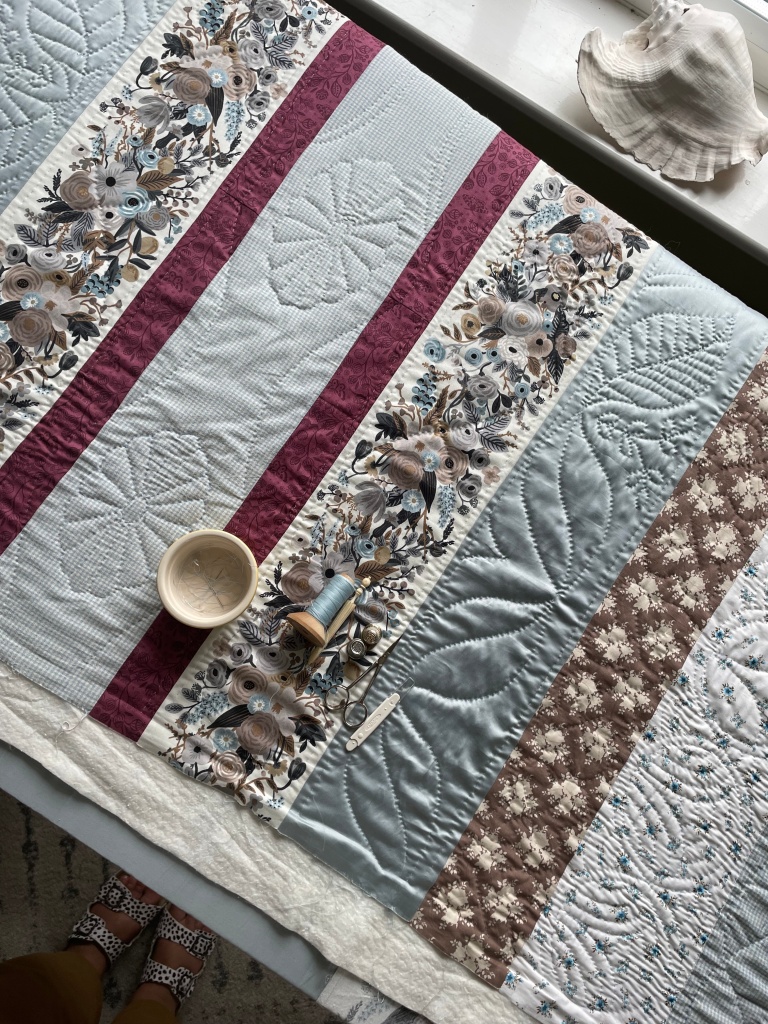
In accounts of the sewing of the past a very clear distinction is made in the kind of sewing women undertook, and how they talked about it and valued it. Firstly stitching is almost always referred to as ‘work’, like ‘I worked for an hour after supper whilst Sidney read aloud’. Anyone who has toiled countless hours over the multiple processes involved in making a large quilt has no doubt that those women named it pertinently. Sewing is Work. It’s effort, it requires skill, application, perseverance and it creates a useful and beautiful item at the end – thus I make my quilts in a Workroom.
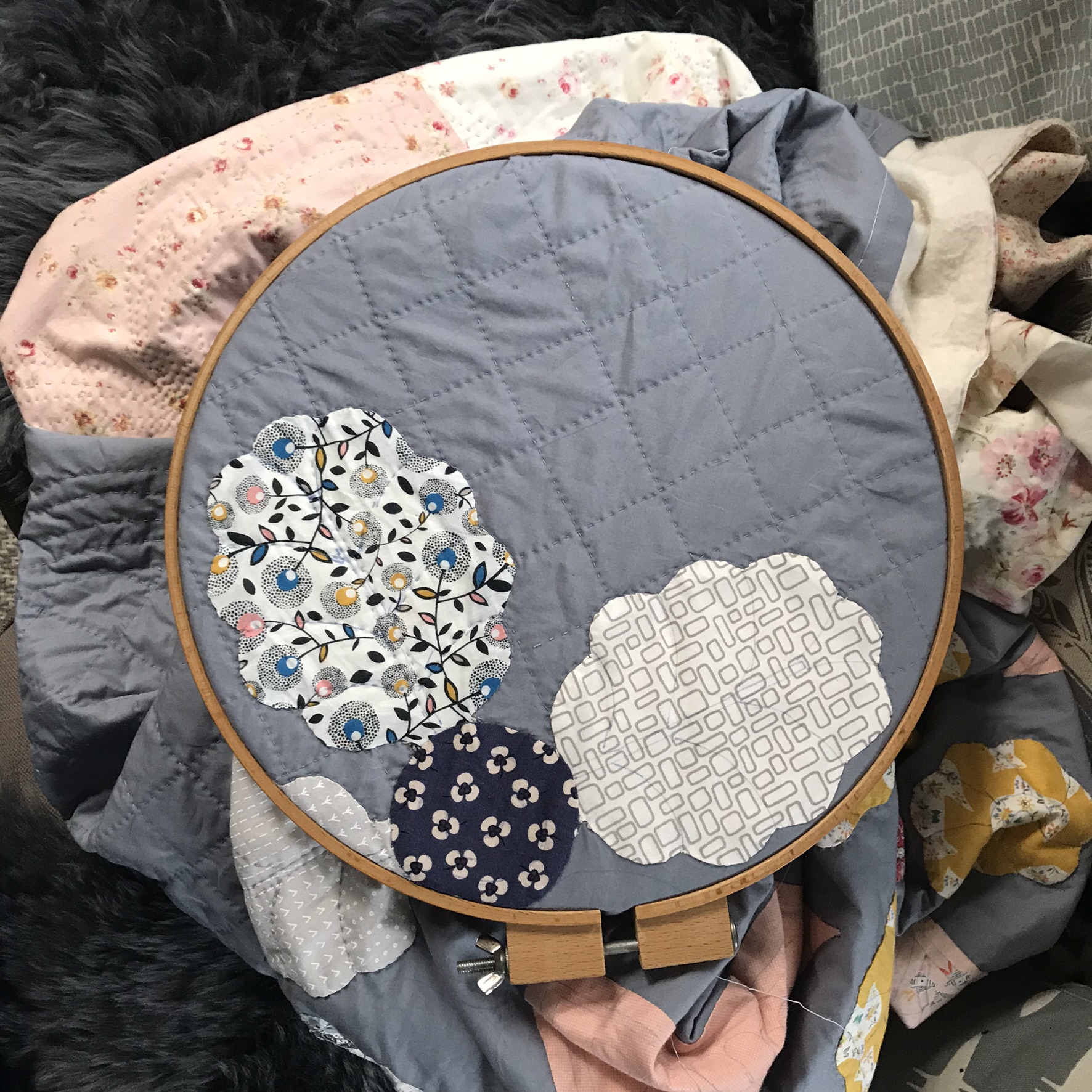
In our shared sewing past there was a distinction between the type of work, and its perceived value. Fancy work was embroidery, cross stitch, couching, crewelwork, anything that we’d think of as embellishment and requiring a suite of different stitches that needed to be painstakingly learnt to be employed. This was the ‘frosting’ of the sewing of the past, seen as an accomplishment but subject to inevitable patriarchal hand wringing about how much time young women should spend on this (the usual Cinderella dichotomy of women’s behaviour – a bit is good but too much is a problem ;/ )
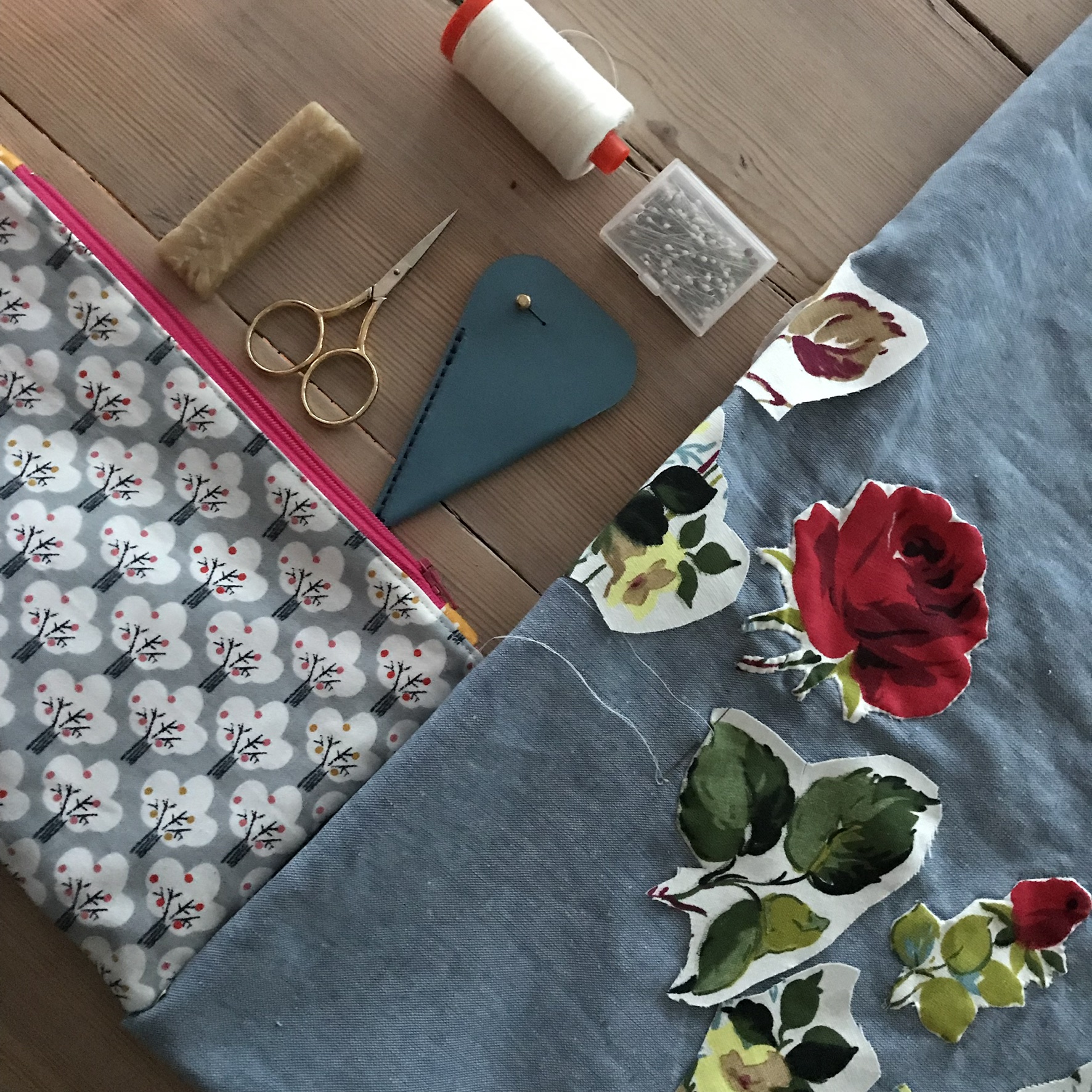
In contrast, regular sewing was the running stitch, the back stitch, whip stitching, the hard working practical stitches that hemmed and seamed and they were called ‘Plain Stitching’. Plain sewing was the workaday, everyday sewing, and those were the stitches that made quilts. They were the humble and unsung, not flashy or celebrated, yet inch by inch, yard by yard, over days, weeks and months those are the stitches that create the alchemy that transforms a bag of rags into a beautiful heirloom. Not all women in the past sewed, and not everyone sewed well, but most women couldn’t avoid at least some plain sewing skills to function in a world where things were maintained, reworked and re-purposed. This humble stitch was the language of women when literacy wasn’t universal, women worked their initials or cipher onto their laundry and that of their families to mark their possessions. It was a powerful language.
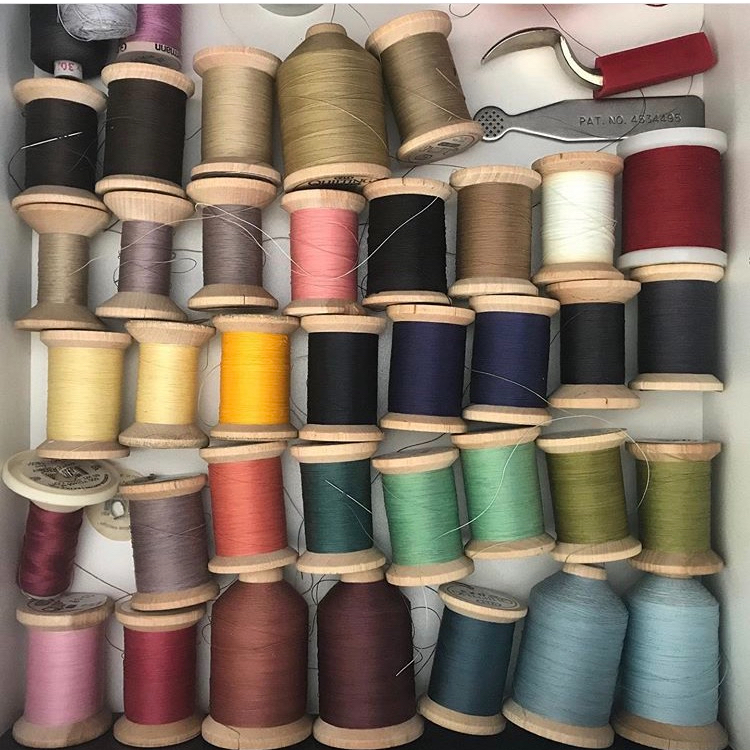
So many modern sewers, when faced with the apparent complexity of a patchwork quilt or an intricate wholecloth, say ‘I could never learn how to do that’ because at first glance these works of art seem dizzyingly complex. But what I love, as an advocate of the power of stitch, is the reassurance that all you really need to start is just a basic running stitch……..a PlainStitch.
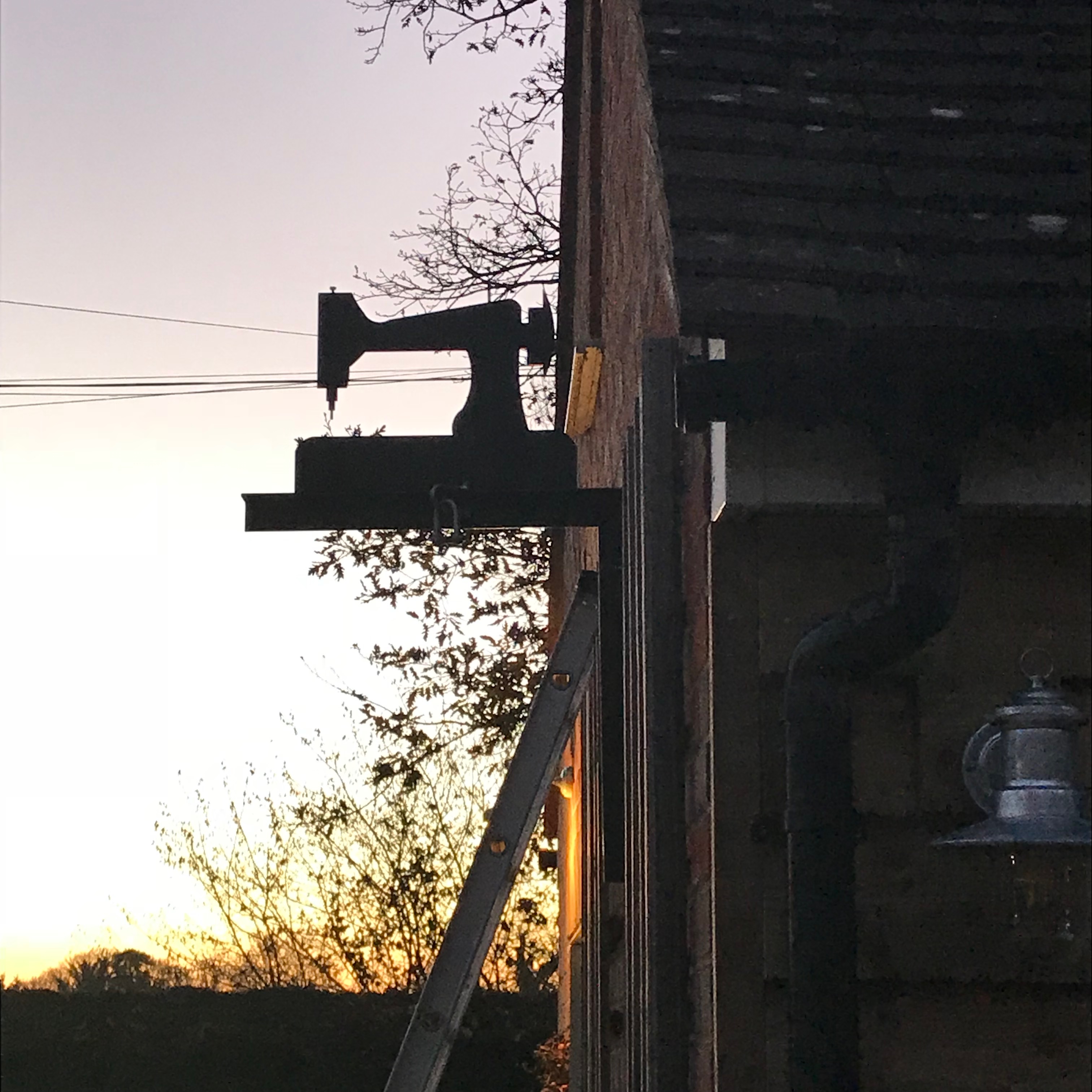
Making my PlainStitches in my Workroom every day I still love everything that this name conveys. The idea that a quilt is an item borne of perseverance, made from humble materials, and that it is created into being from something that existed only in the minds eye, still resonates with me as much as it did 25 years ago when I made my first quilt.
I love quilting, probably more than patchwork, the texture overlaid, like a barely-there second message about the maker hidden behind the more obvious piecing. I’m a modern maker who finds inspiration in the past. Too traditional for modernism, too modern for traditionalists. My quilts sit somewhere in the warm middle, with an eye to all the legacy of the quilt makers who came before, but with a desire to make quilts that speak of today. In quilting, as in life, I am a fan of the understated, roll your sleeves up, hard work of humble plain stitching which through sheer perseverance makes items of beauty emerge.
Next time you look down at your own stitches with a critical eye ( as we all are inclined to do from time to time) remember their long legacy, their power as a personal language unique to you, and celebrate the work and the wonder of plain stitching. Find out more about sewing in a frame here.
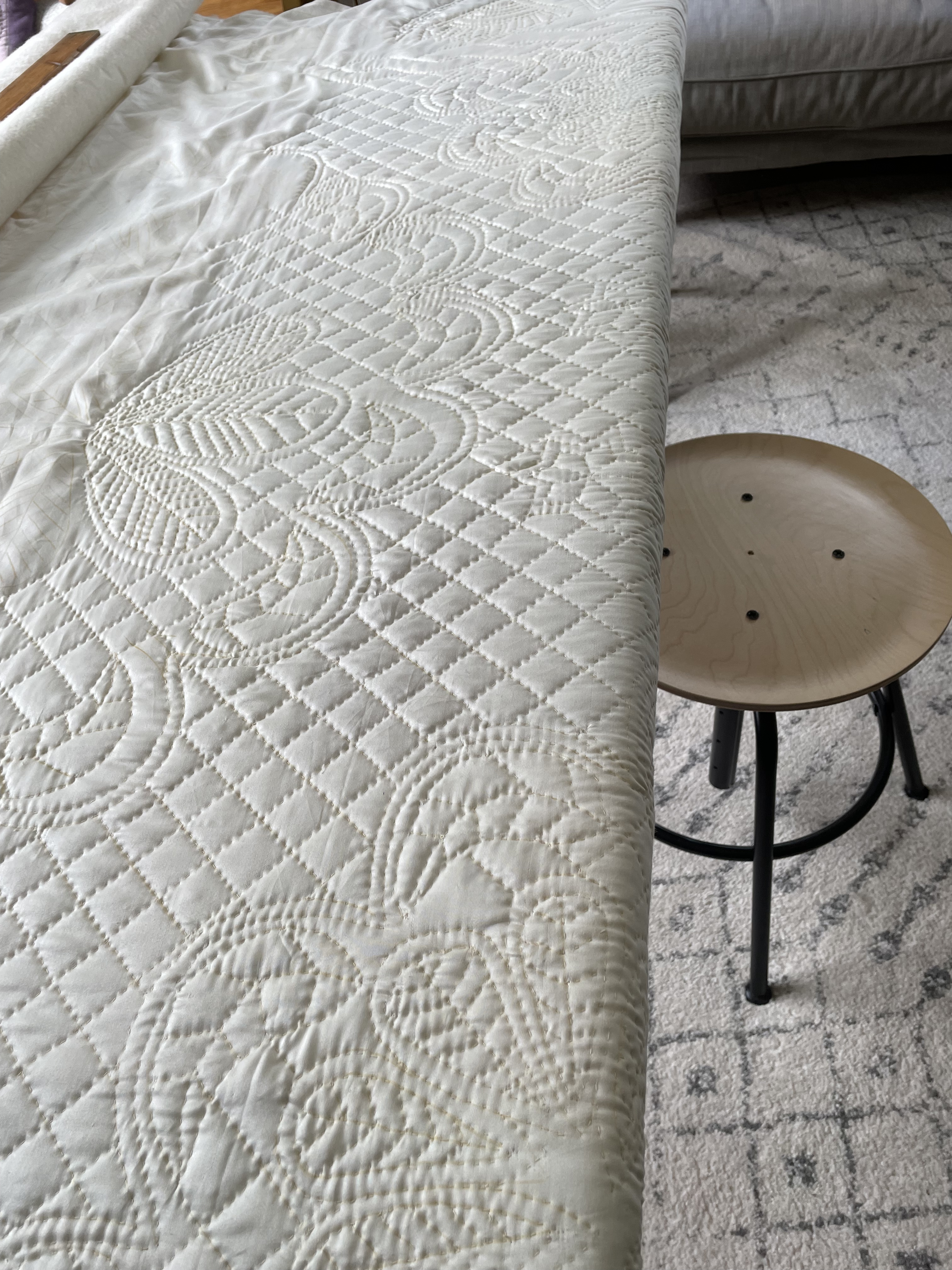



You have so eloquently said what I’ve always felt about quilts, ever since seeing my first handmade antique quilt in a young child’s bedroom well over 50 years ago. I’m sure that quilt is gone by now, as is that unfortunate young man, but the memory of both remain firm in my memory. I’ve just discovered your blog, will be exploring further.
LikeLike
Thanks Pat, it’s always lovely to hear from others who feel the same 🙂
LikeLike